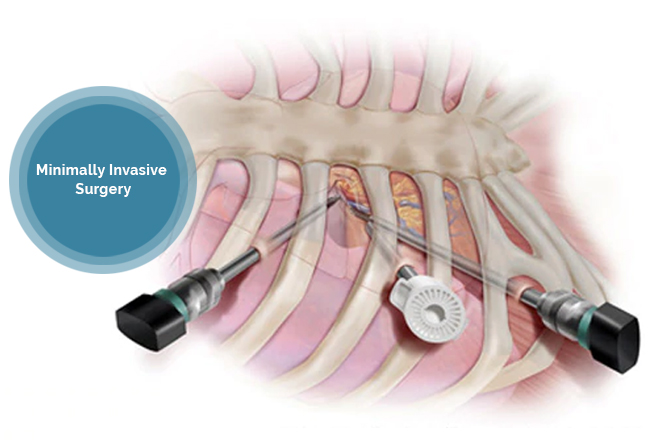Minimally Invasive Joint Replacement Surgery – Faster Recovery & Less Pain
Published on December 17, 2019 By Dr. Vivek Mittal
Introduction
Advanced medical technology has introduced Minimally Invasive Joint Replacement Surgery, making treatments more convenient for both doctors and patients. This breakthrough in medicine has revolutionized surgical procedures, reducing risk, pain, and complications. It also ensures faster recovery and improved outcomes.
What is Minimally Invasive Surgery?
Minimally invasive surgery allows surgeons to perform procedures using small cuts or incisions. This technique results in less blood loss, reduced tissue damage, shorter hospital stays, and faster healing.
In contrast, traditional surgery requires larger incisions, leading to longer healing times and higher risks of complications. Patients often experience heavy bleeding and extended recovery periods. Some minimally invasive surgeries also incorporate robotic technology for more precise control. This method is highly effective in joint replacement surgeries, including hip, knee, shoulder, and ankle procedures.
This blog highlights two of the most common minimally invasive joint replacement surgeries: knee and hip replacement.
Minimally Invasive Knee Replacement Surgery
Both minimally invasive and traditional knee replacement surgeries aim to relieve chronic knee pain. However, several key differences set them apart.
Key Differences Between Traditional and Minimally Invasive Knee Replacement
- Incision Size: Traditional knee replacement involves an 8 to 12-inch incision. Minimally invasive surgery requires only a 3 to 6-inch incision.
- Kneecap Treatment: In conventional surgery, the kneecap is rotated 180 degrees for better access. In minimally invasive surgery, it is gently pushed aside instead.
- Bone Dislocation: Traditional surgery dislocates the tibia from the femur before fitting the prosthetic. Minimally invasive surgery avoids this step, preserving natural joint integrity.
Why Surgeon Experience Matters
The success of knee replacement surgery depends on the surgeon’s expertise. Renowned specialists like Dr. Vivek Mittal have helped countless patients regain mobility and live pain-free lives.
Minimally Invasive Hip Replacement Surgery
Minimally invasive hip replacement follows a similar approach to conventional surgery but involves smaller incisions and specialized tools for precise implant placement.
Types of Minimally Invasive Hip Replacement Surgery
- Single-Incision Surgery
- Involves a 3 to 6-inch incision.
- The exact length depends on the patient’s size and the complexity of the procedure.
- Two-Incision Surgery
- Uses two small incisions instead of one.
- A 2 to 3-inch incision is made over the groin for socket placement.
- A 1 to 2-inch incision is made over the buttock for femoral stem placement.
- This method typically takes longer than traditional hip replacement surgery.
Recovery: The Key to Long-Term Success
Recovery plays a crucial role in orthopaedics and joint surgery. Following post-surgery instructions and attending physical therapy sessions are essential for successful healing.
By choosing Minimally Invasive Joint Replacement Surgery, patients can experience reduced pain, quicker recovery, and long-term relief. If you are considering joint replacement, consult an experienced specialist to explore the best treatment options.




